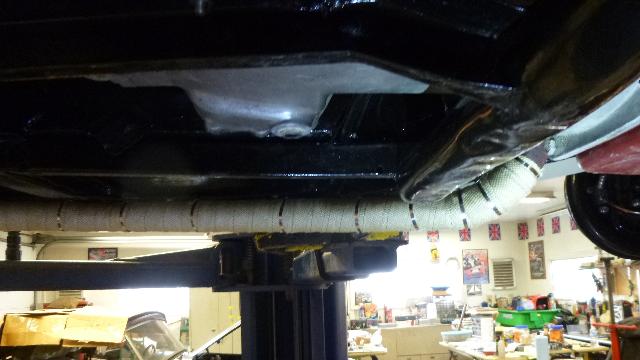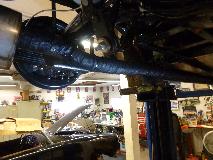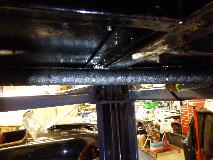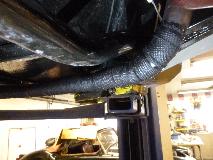The MGA With An Attitude
EXHAUST WRAP - EX-206
On 3/21/2019, David McCoy of McCoy Restorations in Oxford Ohio wrote:
"We are eliminating the heat in the cockpit for the MGA with a special heat resistant foil. On the exhaust we wrapped header wrap good to 1500 degree and used stainless ties to support everything. We are going to seal it with the special paint".

Enclosed is the finished product. The customer is quite pleased with it.



I feel inclined to put my $0.02 in here and say that I'm not particularly keen on exhaust wrap. This stuff is of course intended to reduce heat radiation from the exhaust, but what it actually does is to push the heat farther down stream. When you wrap an exhaust manifold or header pipes it keeps the heat inside, which makes the entire system run at higher temperature all the way downstream. Wrapping the exhaust pipe from manifold back under the cockpit floor retains more heat and makes the rest of the system from there back run hotter. If you were particularly successful at this endeavor, the rear muffler and tail pipe might run as hot or hotter than the original temperature of the exhaust manifold. The objective then must be to push as much heat as possible out the end of the tail pipe rather than letting it escape under the car.
One issue I have with this is high temperature heat cycling of the exhaust manifold or header pipes. It should be fairly well know about this causing cracking of header pipes. My personal experience is related to thermal distortion and shrinking of the iron manifold, even in standard configuration without heat wrap tape.
When the iron manifold is heat cycled it shrinks from front to back along the manfold to head gasket. Next time it is to be disassembled it requires a crow bar to extract it from the two front and rear studs in the head. Then it cannot be reassembled until the end holes are elongated with a rat tail file or grinder. After more usage, next time it comes apart it may require more elogation of the end holes. Continuing this process for some time, the end runner flanges eventually bump into the the second stud from the end, at which time you need to begin grinding the flanks of the flanges to clear the second studs. Functional result of all this is misalignment of the manifold to the ports in the cylinder head.
Now if you never remove the exhaust manifold, and never do the grinding to accommodate the shrinkage, then stresses build up in the iron manifold until it breaks. These most often break at the crotch of the rear "Y", and then you have to replace the manifold. I have had to replce several broken exhaust manifolds on my car, at least three of them in the past five years (something like 180,000 miles). I'm pretty sure that heat tape wrapping these manifolds would make the problem worse by accelerating the shrinkage. This may also be part of the reason why you get cracks in tubular header pipes.
That aside, there may be more productive ways to reduce cockpit temperature. Also sometimes good enough really is good enough, and more work leads to diminishing returns for the effort and expense. For myself, I put 3/8-inch for carpet padding all the way from the MGA front goalpost to the rear floorboard, including the tunnel, and then normal carpeting. I also like the results of installing the under dash pad (original on the Coupe only) to reduce heat soak through the firewall. The most significant thing is to plug every tiny hole in the firewall to prevent air intrusion. One hole the size of a pencil, or similar aperture around a speedometer or tachometer cable, can let through much hot air like you wouldn't believe possible form a single hole. This recipe works well for me, and I do not feel like I'm being cooked while driving. From that configuration, wrapping the exhaust system may not give much more heat reduction in the cockpit.
For cold temperature running I also recommend padding the inside of the door skins, and be sure to put snap plugs (1-inch diameter) in the side walls behind the front kick panels, four holes on each side.
|